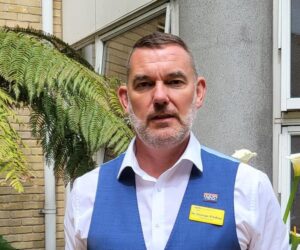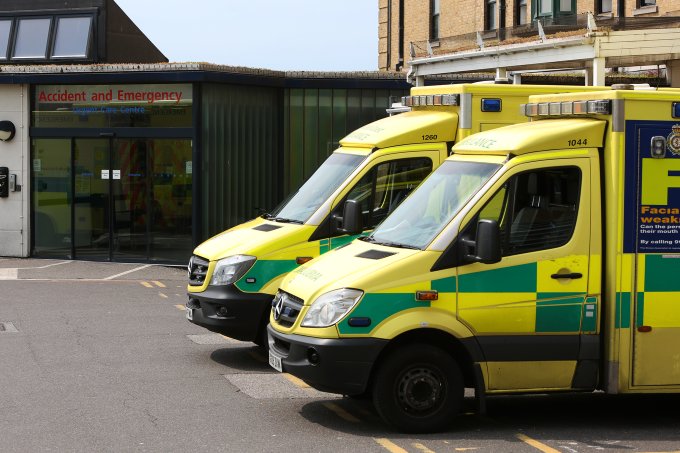Just over half of accident and emergency (A&E) patients in Brighton were seen within four hours last month – 55 per cent compared with a target of 78 per cent.
And one in ten patients brought by ambulance waited more than an hour to be handed over to A&E staff at the Royal Sussex County Hospital.
At the same time, a “high number” of patients spent for more than 12 hours waiting to be seen in the Royal Sussex emergency department.
The figures were shared with councillors by NHS hospital trust chief executive George Findlay who spelt out some of the steps being taken to tackle the challenges.
The biggest step is a £48 million “rebuild” of the emergency department “which is expected to progress over the next three years”.
Dr Findlay said that University Hospitals Sussex, which runs the A&E department in Brighton, was also taking “a series of shorter-term improvement actions”.
One of these actions involved paying the British Red Cross to work with almost 50 of the thousands of “high intensity users” of A&E services.
High intensity users were defined as those attending the A&E department five or more times in a year. They often had poor mental health and drink and drug problems or were lonely and isolated.
In the first three months of this years, the trust said that 11,450 patients were attending for at least the fifth time in the past year.
As a result of the work by the British Red Cross, A&E attendances by those patients fell 36 per cent, admissions by 26 per cent and ambulance trips to A&E by more than half.
Another measure, virtual wards, was intended to prevent admissions to the Royal Sussex. It involved the Sussex Community Foundation Trust providing a dedicated doctor, nursing team and therapists to give face-to-face care to people at homes rather than in hospital.
Dr Findlay shared the details as he was questioned by members of Brighton and Hove City Council’s Health Overview and Scrutiny Committee at Hove Town Hall yesterday (Wednesday 10 July).
He said: “We know we’ve got significant challenges in the County in delivering the standard of care that we want for our patients, our families and for ourselves. We’ve got quite a bit of a way to go.
“We know that sometimes we delay ambulance handovers and, although that’s improved in the last month, it’s still too high.
“A number of patients waiting for longer than 12 hours are probably waiting for a bed to become available in the hospital.”
Labour councillor Amanda Evans referred to a Channel 4 Dispatches documentary where an undercover reporter working as a healthcare assistant shared pictures of patients in corridors and in a “fit to sit” area who were left alone for hours or even days.
Councillor Evans said: “I think we all know the problems at (the Royal Sussex) are the problems in emergency care all over the country.
“The Royal Sussex County compares reasonably well, given what’s going on in some areas of the country.

“The new Health Secretary has said, as far as his department is concerned, we’re operating now on the basis that the NHS is broken and needs fixing – and I think that’s incredibly true of the emergency care that is available in this country.”
Councillor Evans said that medical professionals from across the country shared pictures of A&E departments, including at the Royal Sussex, which she described as “looking like a third-world country or war zone”.
Dr Findlay said that the NHS was not broken and, while there were problems, the workforce was committed to putting patient care first.
Healthwatch Brighton and Hove chair Geoffrey Bowden also challenged Councillor Evans, saying that the NHS had only two thirds of the beds that it had 25 years ago.
Mr Bowden said that the NHS saw 1.7 million people every day and dealt with more 999 and 111 calls than ever.
He said: “Does that sound broken? It provides care to a bigger population of older and more vulnerable people (and) more socially disadvantaged people.
“It can sound doom and gloom when you’re trying to get votes but it’s really demoralising for people who work in the service to hear this talking down of the NHS the whole time.”

Labour councillor Theresa Fowler, who chairs the Health Overview and Scrutiny Committee, said that she was contacted after a patient had spent a long time on a trolley in a corridor, having been admitted to A&E.
Councillor Fowler said: “She was explaining her loss of dignity at being in a corridor with lots of other people when she was feeling so ill.
“That’s one of my main concerns – about loss of dignity. I’ve been in A&E and seen the corridor with bed after bed in a row. It is quite upsetting and I felt sorry for the patients.”
Another senior health official, Claudia Griffith, the chief delivery officer at the Sussex Integrated Care Board, said that people in Brighton and Hove were less likely to attend A&E compared with those in other parts of the country.
But, she said, people who lived near the hospital or in areas of greater deprivation were among those who were more likely to go to A&E.








The best city councillors are the ones dealing with health, NHS and social care. Cllrs Fowler, D’oliviera and Burden look to be sharp and on it. Health is so important to people. Now, can one of them go to manage transport committee please?
There’s a lot to unpack on why this is the case. To start with, the community element is a massive missed opportunity at the moment in triaging effectively before they get to hospital.
Expanding on services such as the Urgent Treatment at Home Service, which has plateaued in the number of patients seen in recent years, evidences a way we can reduce the pressures on hospital, by improving the situation down the chain.
Just one aspect I’ve highlighted; there are plenty more. Pharmacy First, Greater Usage of Paramedic Practitioners instead of conveyance, diversifying professions in GP, remembering that Pharmacy Technicians are a registered professional. There’s loads of opportunities.
This is the big problem in the NHS. Between 2021 and April of this year, I had to go to A&E around 20 times. Always it was a case of seeing people that had been there for hours. Why has a city like Brighton got just one A&E? I needed help from the urology department and there isn’t one in Brighton so ended up being transferred to Haywards Heath.
With such frequent attendance at A&E, I would perhaps suggest there may be an element of your condition that could be treated within the community?